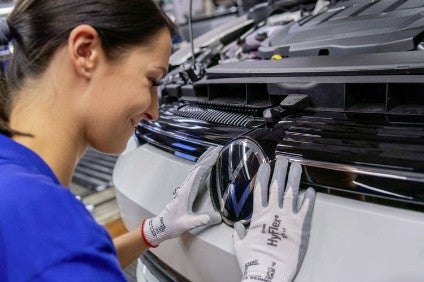
Volkswagen said it had trimmed an hour off the time needed to make the eighth generation Golf.
Production at Wolfsburg began in the summer and is currently in the run-up phase ahead of showroom launches in Germany and Austria in early December.

Discover B2B Marketing That Performs
Combine business intelligence and editorial excellence to reach engaged professionals across 36 leading media platforms.
To prepare for production, approximately 700 work steps were analysed at over 400 stations to improve efficiency. Numerous process improvements have been implemented.
In Wolfsburg, 8,400 employees work exclusively on the Golf. The latest model has over 2,700 individual parts and components and there are 962 wiring systems with 1,340m of cable in fully-connected models. That is 31 wiring systems and just under 100m of cable more than in the Golf 7. Starting with delivery of the steel sheet, the Golf travels 69km on production lines until the finished vehicle leaves the factory.
VW production chief Andreas Tostmann said: "The Golf 8 is much more complex than its predecessor. Nevertheless, we have cut average manufacturing time by about one hour. Because the car is second generation MQB, we achieved a significant reduction in production investments. Our platform strategy is delivering. Production processes have become more efficient overall."
Due to greater standardization of plant and processes, ramp-up investments were cut by more than half compared with the previous model though total investments for the new Golf are still in the mid three-digit million euro range.
Eighty percent of existing body shop plant and equipment was reused. New equipment has been installed for the side panels and this new plant is much more flexible and 40% more productive that the equipment used for the Golf 7.
Commissioning the Golf 8, installing all data, is fully automated and carried out via a fast WLAN network while the vehicle is still on the production line. As a result, manufacturing time for this process step remains unchanged even though the volume of data is higher.
From next year, a new fully-automated generation of driverless transport systems will ensure the faster supply of material.
Body shop logistics will see a 7% improvement in productivity through the use of 23 transport robots.






